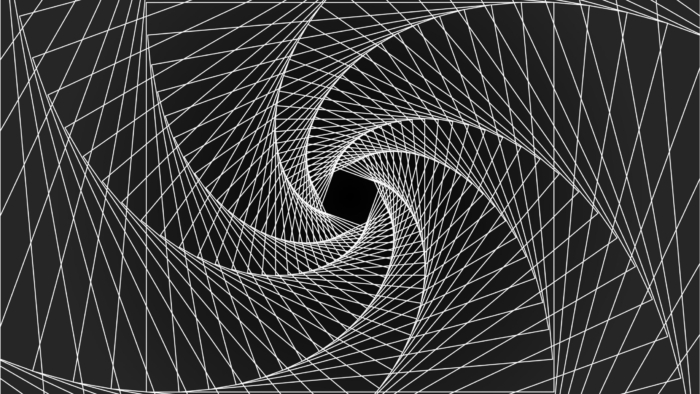Introduction: The Magic of Fibonacci Numbers
Have you ever noticed patterns in nature that seem almost magical? The spirals in sunflowers, the arrangement of leaves, or even the intricate designs of shells? These patterns often follow a sequence known as Fibonacci Numbers. The Fibonacci sequence is not just a mathematical curiosity; it’s a fundamental aspect of the natural world that has intrigued scientists, mathematicians, and artists for centuries.
The Genesis of the Fibonacci Sequence
The Fibonacci sequence is named after Leonardo of Pisa, known as Fibonacci, who introduced this sequence to Western mathematics in his 1202 book “Liber Abaci.” Though the sequence was known to Indian mathematicians as early as 200 BC, Fibonacci’s work popularized it in Europe.
Defining the Fibonacci Sequence
The sequence starts with 0 and 1, and each subsequent number is the sum of the previous two. So, it goes 0, 1, 1, 2, 3, 5, 8, 13, and so on. Simple yet profound, this sequence appears in various aspects of art, architecture, and nature, making it a fascinating subject of study.
Fibonacci Numbers in Nature
The Spiral Phenomenon
One of the most striking occurrences of Fibonacci Numbers is in spirals. The arrangement of leaves around a stem, the pattern of seeds in a sunflower, and the spiral shells of certain mollusks all follow the Fibonacci sequence. This natural efficiency allows plants to optimize sunlight and space, showcasing the inherent beauty of mathematics in nature.
Animal Kingdom Patterns
Fibonacci Numbers aren’t just limited to plants. The breeding patterns of rabbits, the arrangement of pine cones, and even the scales of pineapples exhibit this sequence. These patterns help organisms optimize their growth and reproduction, demonstrating the evolutionary advantage of the Fibonacci sequence.
Mathematical Properties of Fibonacci Numbers
The Golden Ratio Connection
The Fibonacci sequence is closely related to the Golden Ratio, approximately 1.6180339887. As you move further along the sequence, the ratio of consecutive Fibonacci numbers approximates the Golden Ratio. This relationship explains why Fibonacci Numbers appear in aesthetically pleasing designs and structures.
Recursive Nature
The beauty of Fibonacci Numbers lies in their simplicity and recursive nature. Each number is the sum of the two preceding ones, creating a self-replicating pattern. This recursive property is a cornerstone in computer science, especially in algorithms and data structures.
Fibonacci Numbers in Art and Architecture
The Aesthetic Appeal
Artists and architects have long been fascinated by the Golden Ratio and Fibonacci Numbers. The Parthenon in Greece, Leonardo da Vinci’s “Vitruvian Man,” and Salvador Dalí’s “The Sacrament of the Last Supper” all incorporate these mathematical principles. The Fibonacci sequence helps create balance and harmony, resulting in visually appealing works of art.
Modern Architecture
In contemporary architecture, Fibonacci Numbers influence the design of buildings, bridges, and even city layouts. The sequence provides a framework for creating structures that are both functional and beautiful. The Sydney Opera House and the Pyramids of Egypt are prime examples of architectural marvels that embody the essence of Fibonacci Numbers.
Fibonacci Numbers in Music
Rhythmic Patterns
Music, much like nature and art, is deeply connected to Fibonacci Numbers. Composers like Béla Bartók and Olivier Messiaen have used the sequence to structure rhythms and melodies, creating compositions that resonate with listeners on a fundamental level. The use of Fibonacci Numbers in music adds a layer of complexity and intrigue to the auditory experience.
Harmonic Scales
The Fibonacci sequence also appears in the harmonic structure of music. The spacing of notes in scales, the tuning of instruments, and the progression of chords often reflect Fibonacci ratios. This mathematical foundation helps create music that feels naturally harmonious and pleasing to the ear.
Fibonacci Numbers in Technology
Computer Algorithms
Fibonacci Numbers play a crucial role in computer science. Algorithms based on the Fibonacci sequence are used in search techniques, data structures, and even in generating pseudorandom numbers. The efficiency and simplicity of these algorithms make them invaluable tools in modern technology.
Digital Image Processing
In digital image processing, Fibonacci Numbers help optimize algorithms for tasks like edge detection and image compression. The recursive nature of the sequence allows for efficient computation, making it an essential component in developing advanced imaging technologies.
Fibonacci Numbers in Financial Markets
Predictive Analysis
Traders and analysts use Fibonacci Numbers to predict price movements in financial markets. Fibonacci retracement levels, based on the sequence, help identify potential support and resistance levels. This predictive power stems from the natural patterns of human behavior and market psychology.
Risk Management
Fibonacci ratios are also used in risk management strategies. By understanding the potential reversal points in market trends, investors can make more informed decisions and manage their risk more effectively. The Fibonacci sequence thus serves as a valuable tool in the world of finance.
Fibonacci Numbers in Biology
Genetic Algorithms
In biology, Fibonacci Numbers appear in genetic algorithms used for solving optimization problems. These algorithms mimic natural selection, using the Fibonacci sequence to evolve solutions over time. This approach has applications in fields ranging from bioinformatics to evolutionary biology.
Population Dynamics
The Fibonacci sequence models the growth patterns of populations, such as bacteria or animals. By understanding these patterns, biologists can predict population trends and develop strategies for conservation and management. The sequence provides a mathematical framework for studying the complexities of life.
Fibonacci Numbers in Cryptography
Secure Communication
Cryptography, the science of secure communication, often utilizes Fibonacci Numbers. The sequence helps create complex encryption algorithms that protect data from unauthorized access. The inherent unpredictability of Fibonacci Numbers makes them ideal for generating secure cryptographic keys.
Blockchain Technology
In blockchain technology, Fibonacci Numbers enhance the security and efficiency of consensus algorithms. These algorithms ensure the integrity of data in decentralized systems, making blockchain applications like cryptocurrencies and smart contracts more robust and reliable.
Fibonacci Numbers in Medicine
Diagnostic Imaging
In medicine, Fibonacci Numbers improve the accuracy of diagnostic imaging techniques. Algorithms based on the sequence help optimize image reconstruction, leading to clearer and more detailed medical images. This advancement aids in the early detection and treatment of diseases.
Pharmacology
Fibonacci Numbers also play a role in pharmacology, particularly in the modeling of drug interactions and dosing regimens. By understanding the patterns of biological processes, researchers can develop more effective treatments and minimize side effects. The sequence provides a mathematical basis for advancing medical science.
Conclusion: The Timeless Relevance of Fibonacci Numbers
The journey through the enigmatic odyssey of Fibonacci Numbers reveals their profound impact on various aspects of our world. From nature and art to technology and medicine, the Fibonacci sequence continues to inspire and intrigue. Its simplicity and elegance make it a universal language that connects diverse fields and disciplines.
The Ongoing Exploration
The exploration of Fibonacci Numbers is far from over. As we delve deeper into the mysteries of this sequence, we uncover new applications and insights. The Fibonacci sequence remains a testament to the beauty and power of mathematics, reminding us of the intricate patterns that shape our universe.
Embracing the Fibonacci Legacy
By embracing the legacy of Fibonacci Numbers, we open ourselves to a world of wonder and discovery. Whether you’re a scientist, artist, or simply a curious mind, the Fibonacci sequence offers endless possibilities for exploration and innovation. Let the magic of Fibonacci Numbers inspire you to see the world through a new lens, where mathematics and nature converge in perfect harmony.
4o


Add a Comment